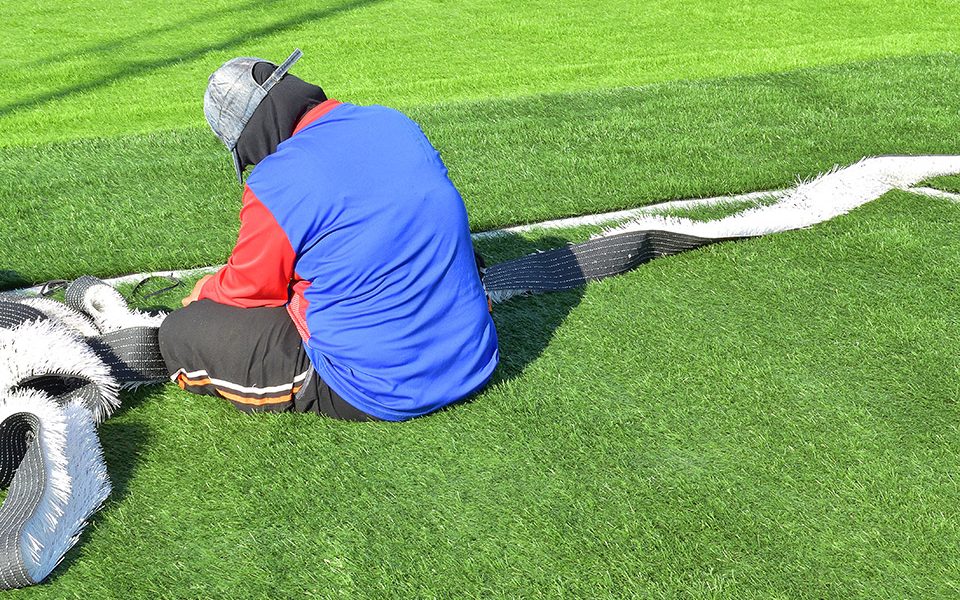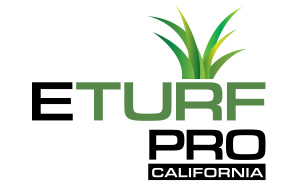Can Artificial Turf Be Repaired?
Artificial turf is undoubtedly one of the most durable and long-lasting landscaping options that beautify a yard. It perfectly complements outdoor living. It can be used in sports courts, walkways, swimming pools, dog runs, and unique installations.
Although its durable materials and strong backing make it endure wear and tear, it is not immune to damage. And any damage may cause accidents if not addressed immediately. While damage is rare since most people go years without needing turf repair, it is not impossible.
So when something damages your artificial turf, do not panic or start planning for a replacement. Rest assured that you or experts can repair your synthetic turf.
What Causes Damage To Artificial Turf?
However durable and strong, several things can damage your synthetic grass, including fire, adhesives, and sharp objects.
Fire
Given that there are sources of fire and heat in your yard, it is easy to disregard how some of these could affect your synthetic turf.
Placing an outdoor grill or fireplace too close to the synthetic turf can cause it to smoke and heat damage your grass. Another commonly overlooked risk is smoking. Cigars and cigarettes produce ash, which can drop and burn your turf when smoking on the turf. This also leads to heat damage.
Adhesives
When you accidentally spill adhesives onto the turf, they cause damage. Adhesives like glue and chewing gum can stick to the grass’s blades affecting their performance. While this does not seem like a big risk, it should be an issue of concern to owners.
When a piece of gum sticks to your turf, you may be forced to cut the blades, making your lawn uneven. It is the same as gum sticking to your hair- you may have to cut it out.
Sharp Objects
This is the most common way artificial grass gets damaged. Knives, spatulas, shovels, or rakes can cut through the backing, causing snags and making your turf uneven. If you have to use sharp objects near the turf, ensure you gently lay them down on the surface to prevent damaging the grass. Instead of using metal combs, consider combs with synthetic bristles to avoid damaging your grass’s blades when cross-brushing your blades.
Heavy Furniture
Synthetic turf can sustain damage and matting from excessive weight resting on its blades. When left on the turf for long, heavy furniture causes damage to your grass because of the excess pressure.
If you have to include heavy furniture on your turf, move them around regularly. Also, avoid parking cars on the synthetic grass altogether. This will prevent permanent damage.
How Are Different Types Of Damage Repaired?
Depending on the severity, repairing damaged synthetic turf requires several actions.
Locating the Gauges’ Direction
Beneath synthetic grass, there are rubbery rows of fibers, also known as gauges. These gauges make up the grass on the upper part. Should your grass suffer damage, the first step is to locate the direction in which the fibers run. This step is important to ensure the replacement piece runs in a similar direction.
Vacuuming Out The Infill
Before repair, it is vital to vacuum out all infill. Removing the whole infill makes the backing more visible for precise cutting.
Separating and Cutting The Fibers From the Backing
This exposes the area that needs cutting, thus preventing damage to the fibers. It is best to use a sharp razor knife to cut the affected part and lift it out.
Using Artificial Grass Seaming Tape
Fold artificial grass seaming tape into a tube. Afterward, place it underneath the backing, then roll it out to cover the entire repair area. Secure this in position with small nails. For extensive repairs, you should use a lot of tape.
Setting Fibers For Adhesive
Next is securing the artificial turf fibers with tape to prevent the undamaged fibers from receiving adhesive. A painter’s tape sticks them away from the damaged area where the adhesive is going.
Applying Adhesive
Follow the directives printed on the adhesive you want to use. Ensure you apply it underneath the backing and over the tape. Also, you can use a towel to make the coating smooth and even.
Precut and Fit the Replacement Piece
Measure the hole you intend to fill and carefully precut the replacement grass piece. Place the piece on adhesive and compress the area for maximum bonding, and you are done.
The above approach is suitable for repairing a small damaged area of synthetic turf. The damage could result from fire, cuts, or the placement of heavy objects. If this does not work, the damage may be more expansive, needing professional assistance. Therefore, ensure you contact a professional for an effective and lasting repair.
What Are The Easiest Artificial Turf Issues to Fix?
Some fake grass problems are barely bothersome and do not cause significant destruction. The most common is weeds growing along the edges or underneath the infills. Thankfully, these can be sprayed with commercial products or pulled out to curb their growth.
Other scenarios do not require comprehensive treatment. For example, pet poop left in a corner that developed into mildew seems tough to deal with, but it is not hard. Though addressing the issue could be unpleasant, it requires little effort. Just pick it up and clean up the area with vinegar or a household cleaner. Then give your artificial turf a thorough rinse.
Another good thing with artificial turf is that it is resistant to staining and fading. Virtually any spilling will not damage the grass, and if paint ends up on it, you do not have to panic- a paint thinner or soft cloth will do the magic. Weed cleaners, household cleaners, or similar products are also safe to use.
Regardless of the issue’s relevance, asking the experts is always recommended. A reliable and trusted synthetic company will recommend the best solution for your specific turf condition.
So before you attempt any repairs, call us for expert advice. The same applies to any new detergents or stain removal products.


